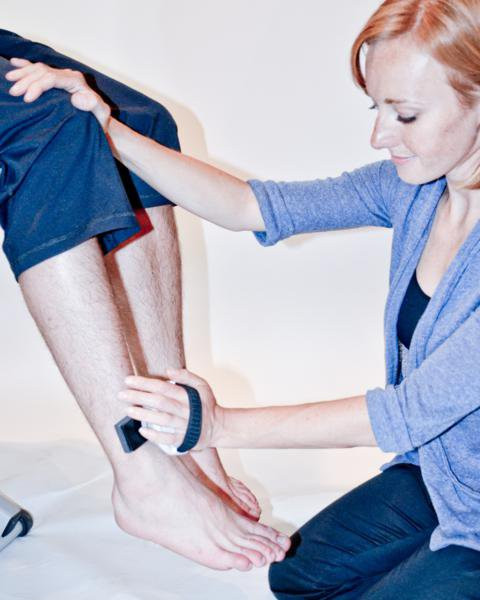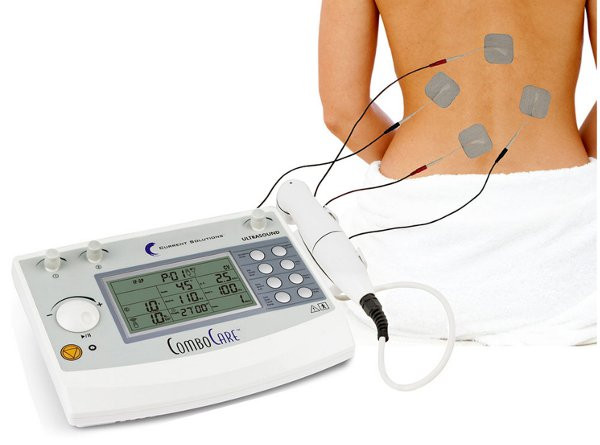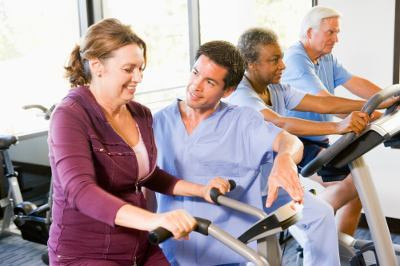 21st Jun 2017
21st Jun 2017
Therapeutic Modality Guide: Popular PT and Rehab Tools

There are many diverse rehabilitation modalities available on the market today and with the speed of innovations, new therapeutic products are introduced all the time. Each modality meets specific therapeutic needs and goals and can often be used with diverse patient populations and conditions.
Specific therapeutic modalities can be used to help patients to:
- Reduce acute, chronic and post-surgical pain
- Limit swelling and edema
- Decrease muscle spasms
- Improve range of motion
- Increase functional movement
- Initiate wound healing
- Facilitate tendon or muscle repair
- Speed-up recovery time
- Lower the risk of recurrent injury
- Wound care
Many therapeutic modalities offer a combination of these benefits, working well with complimentary treatments to maximize treatment outcomes. Because of the success rate of therapeutic modalities, they may be used to treat most patient populations including children, geriatric and professional athletes. From acute injuries to chronic conditions, rehabilitation modalities can be used to help treat:
- Low back pain or sciatica
- Carpal tunnel syndrome
- Post-ACL repair
- Sprains and strains
- Frozen shoulder
- Lateral epicondylitis or tennis elbow
- Arthritis (Rheumatoid & Osteoarthritis)
- Fibromyalgia
- Iliotibial band syndrome
- Migraines or chronic headaches
From diagnosis to completion of treatment, rehabilitation modalities play an important role in treatment. We’ve created a simple guide to some of the most popular therapeutic modalities and their benefits.
The Most Popular Rehabilitation Modalities & Tools

Diagnostic: Each patient must undergo a complete evaluation when seeking treatment. Whether seeing a chiropractor or having physical therapy, diagnostic equipment is invaluable in identifying weaknesses, making a diagnosis, creating a treatment plan and tracking patient progress. One of the most popular diagnostic tools is a manual muscle testing handheld dynamometer. Technology innovations have increased the benefits of having a digital dynamometer. Not only does a handheld dynamometer give accurate readings for a patient’s muscle strength, but with devices like the MicroFET 2 Hand Dynamometer and its compatible software, it’s to collect, organize, and analyze patient muscle test readings wirelessly.
Electrotherapy Devices: Scientific research has found electrotherapy devices to be therapeutically beneficial for reducing pain, both chronic and acute. Advancements in electrical stimulation have led to the creation of therapeutic devices that include multiple waveforms and the ability to treat multiple patients at once, which increases their intrinsic value both for patients and for clinics. For example, the Sys Stim 240 can treat up to 3 patients at a time and has 9 clinical waveforms including:
- Premodulated (2 pole)
- Medium Frequency (Russian)
- Biphasic
- High Volt Pulsed Galvanic
- Microcurrent
- TENS-Asymmetrical Biphasic
- TENS-Symmetrical Biphasic
- Galvanic (Continuous DC) waveforms
Exercise Equipment: Exercise equipment is essential in rehabilitation, particularly physical therapy. With the right tools, it’s possible to increase a patient’s cardiovascular endurance, improve strength or enhance balance skills. Consider the Dynaswing Balance Ball from Togu. Here is a piece of equipment that offers many therapeutic benefits, while being fully adjustable to address each patient’s unique needs and skill level. The Dynaswing Ball helps for:
- Developing deep stabilization muscles
- Improving perception and body awareness
- Increasing coordination
Laser Therapy: Low-Level Laser Therapy (LLLT) is one of the most popular and science-supported modalities in rehabilitation. From relieving pain and stiffness from chronic conditions like arthritis to improving circulation after a procedure like an ACL reconstruction, LLLT is a must-have for all clinics. The Vectra Genisys Transport Laser Therapy Unit is a great unit because not only does it offer patients all the benefits of laser therapy, but it can be used on a table top, wall mounted or can easily be transported for mobile use.
Hydrotherapy: Hydrotherapy is one of the oldest modalities to be used in rehabilitation and with good reason. Consider whirlpool therapy, which can help patients in the following ways:
- Reduction in acute and chronic pain
- Decreased swelling and edema
- Enhanced functional range of motion and movement
- Initiates wound healing
- Lowered down time
However, with a customized whirlpool therapy tub, like those offered by Whitehall, it’s possible to increase brand recognition with applied logos and powder-coated finishes, while also customizing to meet the unique needs of your patient population and clinic space considerations.

Ultrasound Therapy: Ultrasound therapy is another great modality to meet multiple patient needs in one convenient modality. There are many diverse ultrasound therapy devices on the market today, making it easy to address your clinic's needs and in some cases plan for your facilities future growth. Clinics can choose from portable ultrasound therapy devices which are perfect for home sessions or combination devices that combine ultrasound with electrical stimulation. From ultrasound therapy combination units that are able to treat simultaneously with multiple modalities or offer practitioners the ability to treat multiple patients, there is a perfect device for every clinic. Consider the following ultrasound therapy device options:
- Multiple soundhead applicator device: With two soundheads that can be used simultaneously or singly, it increases the treatment surface area and allows for more targeted treatment. In addition to including a 5 cm² / 1 MHz applicator, the Sonicator 740X also comes with a 10 cm² / 1 MHz applicator and a 1 cm² / 3 MHz applicator in order to give targeted treatment to specific areas of the body, both large and small.
- Dual Continuous or Pulsed Mode ultrasound device: When it comes to maximizing the benefit of ultrasound therapy, it’s important to choose the correct mode. Continuous mode is great for treating areas with edema, while pulsed mode offers targeted pain relief for trigger points. The Soundcare Plus Ultrasound Machine offers both continuous and pulsed modes while also offering 1MHz or 3MHz making it simple for practitioners to address superficial injuries and deep tissue pain.
- Portable ultrasound: Battery-operated and even hand-held ultrasound devices that are perfect for home treatment or for smaller clinics looking to offer therapeutic ultrasound. The Chattanooga Transport Ultrasound Therapy machine can be plugged into a wall socket or can be used with the included rechargeable battery pack making it an exceptional portable therapeutic device.
- Combination therapeutic ultrasound machines: Machines like the InTENSity CX4 combine ultrasound therapy with another treatment modality, in this case, electrical stimulation. Either modality can be used alone or simultaneously to maximize both treatment time and outcomes.
Rehabilitation modalities offer many benefits for both patients and clinics. From meeting patient goals to maximizing treatment times, therapeutic modalities help practitioners create a successful rehabilitation practice.






